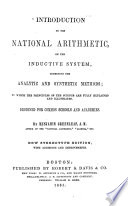 | Benjamin Greenleaf - Arithmetic - 1861 - 338 pages
...of differences; therefore, 9 -f- 1 = 10 is the number of terms in this series. Hence the following RULE. — Divide the difference of the extremes by the common difference, and the quotient. increased by 1, will be the number of termi required. EXAMPLES FOR PRACTICE. 1. If the... | |
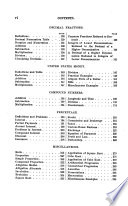 | James Stewart Eaton - 1862 - 320 pages
...extremes is the common difference multiplied by one less than the number of terms. Hence, conversely, RULE. Divide the difference of the extremes by the common difference, and the quotient, increased by 1, is the number of terms. Ex. 1. The extremes of an arithmetical series... | |
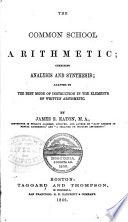 | James Stewart Eaton - Arithmetic - 1866 - 328 pages
...extremes is the common difference multiplied by one less than the number of terms. Hence, conversely, RULE. Divide the difference of the extremes by the common difference, and the quotient, increased by 1, is the number of terms. Ex. 1. The extremes of an arithmetical series... | |
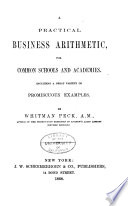 | Whitman Peck - Arithmetic - 1868 - 304 pages
...— ;T=T-~ Art. 203, — To find the number of terms, the extremes and common difference being given. Divide the difference of the extremes by the common difference, and add one to the quotient. I — a or a — I n= -d + 1 Art, 204, — To find the sum of the series, the... | |
 | John Fair Stoddard - Arithmetic - 1868 - 428 pages
...differencef to find tlie number of terms. ANALYSIS. — Since, a + (n — l)c=l. n= — +1. Hence, the c Rule. — Divide the difference of the extremes by the common difference, and increase the quotient by 1. 1. The first term is 8, the last term 203, and the common difference 5... | |
 | Henry Bartlett Maglathlin - Arithmetic - 1869 - 332 pages
...the difference of the extremes by the number of terms less one. Also, to find the number of terms, Divide the difference of the extremes by the common difference, and add one to the quotient. Exercises. 1. The extremes of an arithmetical series are 5 and 27^, and the number... | |
 | Robert Stewart (of Dundee.) - Arithmetic - 1871 - 248 pages
...their ages? CASE III. When the extremes and common difference are given, to find the number of terms. RULE.— Divide the difference of the extremes by the common difference, and add 1 to the quotient for the number of terms. 8. If the extremes of an arithmetical series be 4 and 24, and the common difference... | |
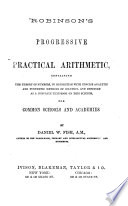 | Horatio Nelson Robinson, Daniel W. Fish - Arithmetic - 1858 - 378 pages
...term, we have left the common Difference taken as many times as the number of terms, less 1, Hence, RULE. Divide the difference of the extremes by the common difference, and add I to the quotient. EXAMPLES. 1. The extremes are 7 and 43, and the common difference is 4 ; what is... | |
 | Benjamin Greenleaf - Arithmetic - 1871 - 350 pages
...the number of differences ; therefore 9 -)- 1 = 10 is the number of terms in this series. Hence the RULE. — Divide the difference of the extremes by the common difference, and the quotient, increased by 1, will be the number, of terms. EXAMPLES FOR PRACTICE. 1. If the extremes... | |
| |